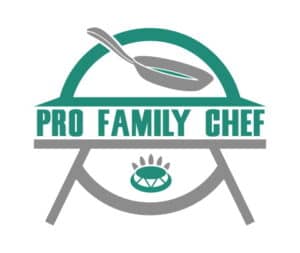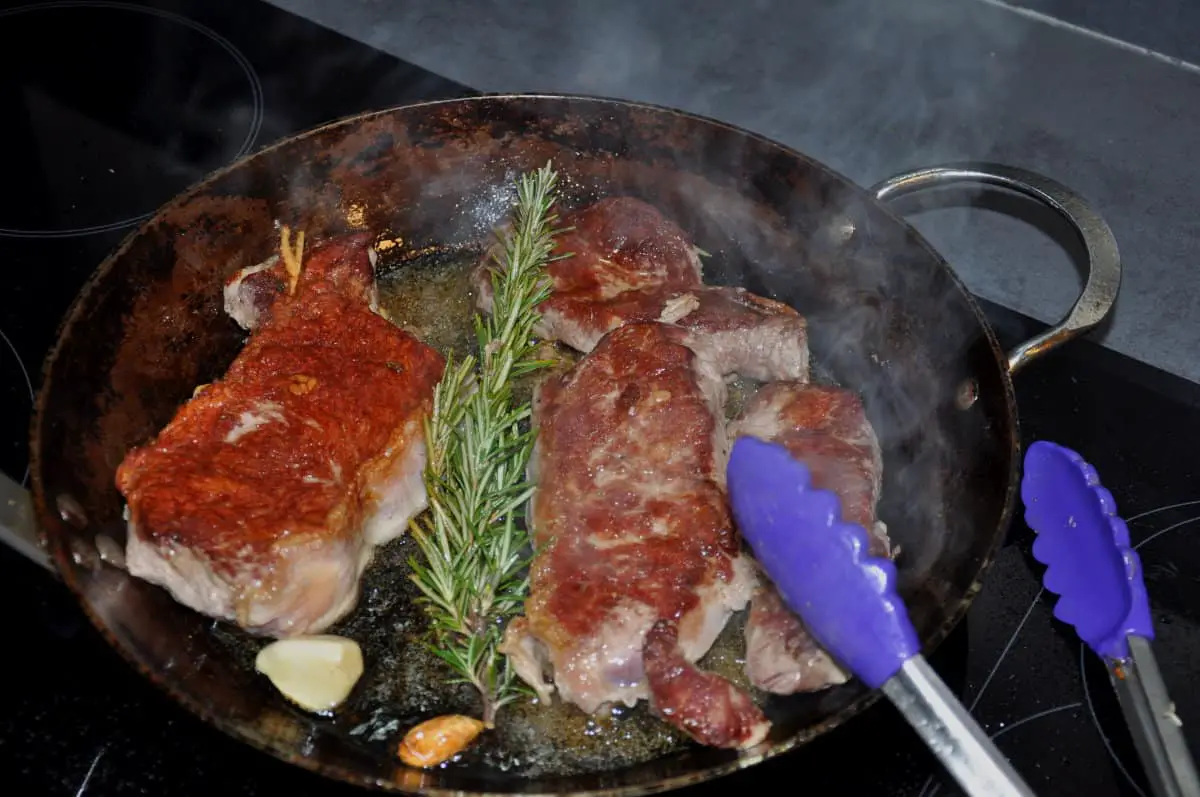When using oil to pan fry food, you may sometimes feel like you are not completely sure how much oil to use in the pan. Here is a quick helpful table with most common foods and how much oil for pan frying you need:
| How much oil for pan frying | |
|---|---|
| Food | Oil amount |
| Chicken breast | 2 Tablespoons |
| Chicken tenders | 2 Tablespoons |
| Chicken, breaded | 10 Tablespoons |
| Fish sticks | 10 Tablespoons |
| Fish fillet | 2 Tablespoons |
| Salmon | 1 Tablespoon |
| Tuna | 1 Tablespoon |
| Turkey | 2 Tablespoons |
| Pork chops | 1 Tablespoon |
| Beef steak | 2 Tablespoons |
| Burger | 2 Tablespoons |
| Potatoes | 5 Tablespoons |
| Egg | 1 Tablespoon |
| Omelette | 2 Tablespoons |
There are, however, methods that you can use to “eyeball” how much oil to use. Keep in mind that there are different types of pan frying:
- Shallow pan frying
- Sautéing
- Deep frying in a thick bottomed pan
- Stir frying
When frying food in a pan, you need to take a few things into consideration:
- Firstly, will you be deep frying, sauteing, stir frying, or shallow pan frying. There is a difference in the amount of oil you will need for each of these techniques.
- Secondly, what type of food will you be frying in the pan?
- And thirdly, how much of this food will you be frying? In addition to this, you need to factor in the size of the pan and how long the food will need to be cooked.
- Furthermore, you may want to consider the type of oil you will be using as well. Some cooking oils have a higher smoke point.
If you use too little oil, and the pan is very hot, you run the risk of burning the food before it is fully cooked. You will also end up with a lot of residue. If you use too much oil and the oil is cold when putting the food in the pan, your cold food will end up soaking a lot of the oil, leaving you with a very unpleasant taste and texture.
How to measure the right amount of oil for pan frying
This applies to:
- shallow pan frying,
- stir frying, or
- sautéing.
In order for you to successfully cook food in a frying pan, you will need to coat the inner part of the pan with oil. Use cold oil in a hot pan. Pour one to two table spoons of oil into the pan, or, alternatively, 1/8 of an inch of oil. Swirl the oil around to cover each part of the pan, and put any of the excess oil into a side bowl. Again, this technique will depend on the size of the pan.
For example, when cooking in a skillet, you may only need to add 1/8 of an inch of oil, which is a good starting point. You can always add more oil if this amount is not sufficient to coat the bottom of the skillet or pan. Alternatively, you could also add more oil during the cooking process if more oil is required.
This applies to:
- deep pan frying.
When you are deep frying items like chicken tenders, or something similar in size, you may want to add more oil than previously mentioned. Ideally, there should be enough oil in the pan to properly deep fry the food in the pan. A good rule here would be to fill the pan no more than a third of the way full. It’s important to figure out the amount of oil in relation to the amount of food. For example, you will not use the same amount of oil to pan fry three chicken tenders versus six chicken tenders.
For deep pan frying, a good rule of thumb may be to start with one and a half inches to two inches of oil. You can always add more.
Measure your pan at the deepest point and then add one and a half to two inches of oil. This will work out to approximately two to four cups of oil, depending on the size of the pan. For smaller pans, decrease the amount of oil that you start with.
The type of oil you will be using:
In addition to the amount of oil and the type/size of pan, you should also consider the type of oil you will be using. Keep in mind that different types of oil have different smoking points. The smoking point of an oil refers to the highest temperature to which the oil can be heated before it starts to burn.
Vegetable oil and canola oils have a much higher smoking point and are usually used for deep frying. So, if you are going to be frying things like potatoes, chicken tenders, or battered fish in a deep frying pan, you may want to use an oil that can burn longer and at a higher temperature. Simply apply the measuring techniques that were explained.
Furthermore, if you are shallow frying, sautéing, or stir frying, you may want to impart some flavor to the food, through the oil. In this case, you may use an oil with a lower smoke point, such as olive oil, coconut oil, or grapeseed oil. This method of cooking does not always call for high-heated cooking. And, these types of oils, that have lower smoking points, are ideal for this type of cooking.

